Just 10 years ago, women were banned from combat. Now, they're on the front lines, climbing the ranks.
FORT STEWART, Ga. – Being a woman in an Army combat unit often means being the only woman in the room.
Or the tank.
Staff Sgt. Ricora Jones, 23, recalls being the lone woman on the plane headed to Fort Stewart, a sprawling, swampy, piney post near Savannah and home to the Army's 3rd Infantry Division. On the bus from the airport, the same thing: no other women. Six years later, she's the only woman in the massive Abrams tank that she commands.
Jones plans to become a drill instructor, in part to show young women – and everybody else – that there's a role for them in combat.
"I don't think they should look at us women as anything different," Jones said. "As long the job's getting done, that's the No. 1 priority."
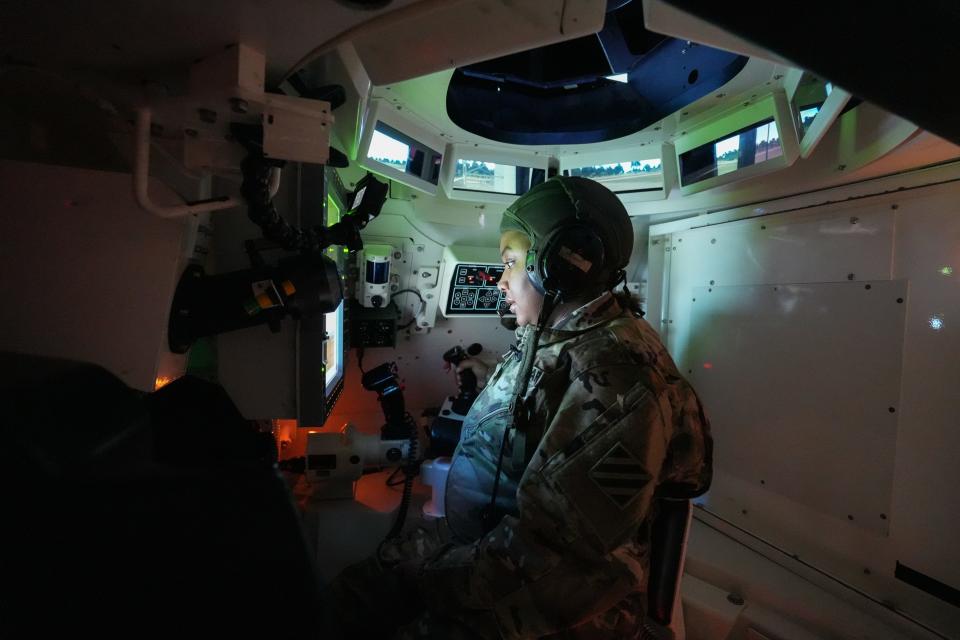
How women could ease recruiting crunch
The Army, facing its worst recruiting crisis since Vietnam, strains to meet its priorities without more soldiers. Women seizing a more prominent role in combat, some soldiers say, could ease the recruiting crunch.
Ten years after the Pentagon repealed the ban on women serving in ground combat positions, female soldiers have risen in the ranks of these frontline units. Yet the intractable problem of sexual assault and harassment in the ranks – reports surged in the Pentagon's most recent survey – threatens progress. One female combat officer recalled during reporting of this story of being told by a male senior officer that she'd have received better reviews if she had slept with her superiors.
For most soldiers, 63% of whom joined the Army after women became eligible to serve in ground combat jobs, having a woman in charge of their unit is unremarkable.
USA TODAY examined Army data on women in combat jobs, identified some of the more popular fields and spoke to several soldiers, men and women, to assess progress and acceptance. Serving in a combat unit – artillery, armor, infantry or aviation – is nearly a prerequisite to achieving the military's highest ranks. For example, Army Gen. Mark Milley, the chairman of the Joint Chiefs of Staff, is an infantry officer. When a woman attains that rank, she'll likely come from this generation of combat officers.
Why former Defense Secretary Panetta lifted the ban on women in combat
Women have served since before the nation's birth, joining men on Revolutionary War battlefields. All told, more than 3 million women have served throughout the nation's history. The last restriction on women's service ended in 2013 when Defense Secretary Leon Panetta lifted the Pentagon's 1994 ban on women in direct ground combat roles. But under the Pentagon's cautious, phased approach to opening the careers to women, it wasn't until 2016 that women were eligible for every combat job.
Panetta had personal and professional reasons to rescind the ban. The professional part was simple, he said in a recent interview. If women qualified, there was no reason to deny them service, especially with the all-volunteer force struggling to meet its recruiting quotas.
The personal part involved his father explaining that he emigrated from Italy in search of a better life for his family, "the American dream" that Panetta said he himself has lived.
"It was important for me because I really believe that everybody has a responsibility to provide service to our country," said Panetta, an Army veteran who served in Congress, was White House chief of staff and led the CIA and Pentagon. "Everybody – regardless of race, color, creed or gender – ought to have the opportunity to wear the uniform and be part of America’s military force.
"It’s in me that women ought to be given the opportunity to serve in any capacity if they’re able to do the job," he said. "There's no reason not to."
More women going to Army Rangers
In the Army, the largest branch of the armed services, thousands of women have served in fields known as "combat arms" since 2016. Air defense – operating surface-to-air missile systems – has been the most popular combat field for women. Other fields include aviation, armor – meaning tanks – and the infantry, comprised of rifle-toting ground troops. Special Forces, which are small, elite units of commandos, have some of the lowest percentage of female soldiers.
In the Marine Corps, whose main purpose is ground combat, 562 women have joined frontline units since the ban was lifted.
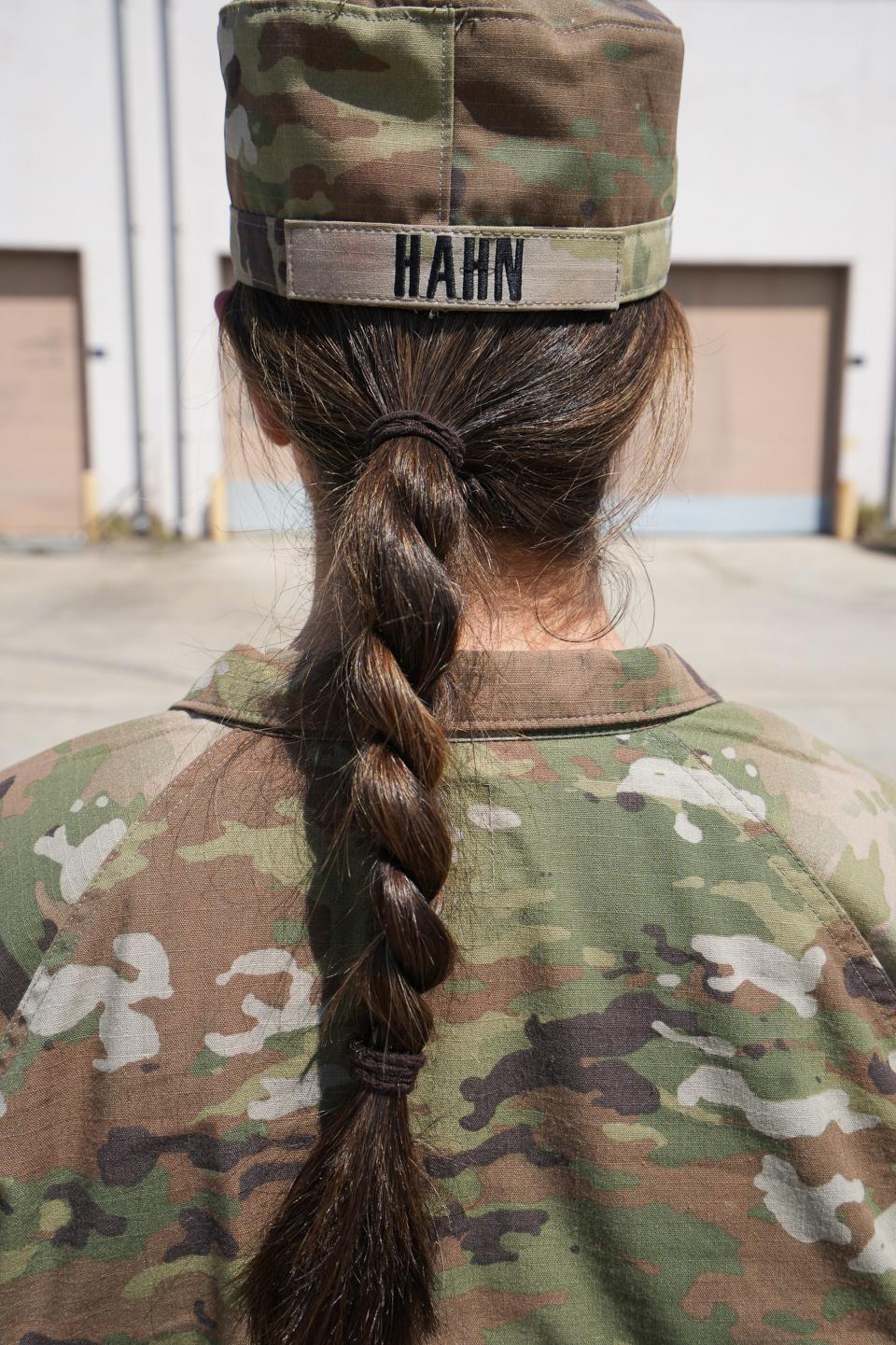
Overall, women make up about 16% of the armed forces. More than 300,000 women have served in Iraq and Afghanistan since 9/11, and more than 9,000 have earned badges for action in combat.
"Since the opening of combat positions to women, several female service members have trained to step into these new roles," said Army Maj. Charlie Dietz, a Pentagon spokesperson. "Over the past seven years, 100 women have graduated from the Army’s Ranger School."
'Once I have the baby, I'll be back on the tank'
Staff Sgt. Smith joined the Army after graduating from high school in Pensacola, Fla. She credits her stepfather, a veteran, as an inspiration, and a military desk job held no appeal for her.
"I wanted do something that's different," she said.
Tanks.
Her military title is "armor crewman," the specialty that pertains to tanks. She's driven Abrams tanks and served as a gunner on them during tours to Korea and Germany. Now she commands the three-member crew of the 70-ton tank. During training at Fort Stewart inside a simulator, she relayed orders in a conversational tone. Then she destroyed targets as they appeared on her screen.
Spc. Joshua Corona, one of her crew members, appreciates Smith's demeanor.
"She doesn't have to yell," said Corona, 33, of Tifton, Georgia. "She says what she wants and expects it to be done. Intelligent, hard-working, good person."
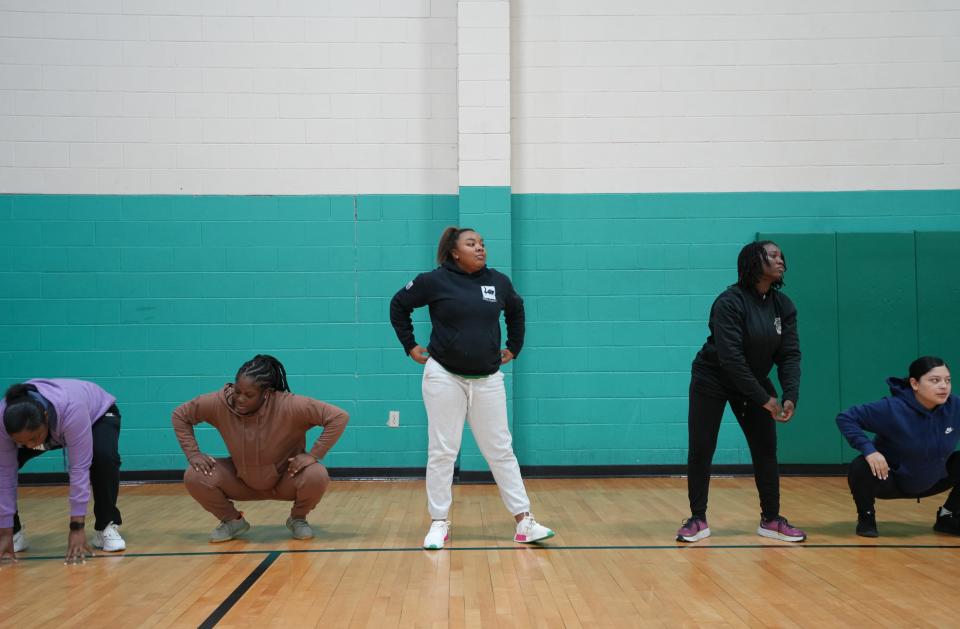
Jones, who is expecting a son in May, begins her day in group exercise with other pregnant soldiers and those who have recently given birth. Until she returns from maternity leave, she won't be commanding her Abrams tank.
"But once I have the baby I'll be back on the tank, back with my crew, as if nothing changed," she said.
Her boss, platoon sergeant Eric Ivory, 38, from Gilbert, Arizona, joined the Army in 2005. He fought in intense combat in Iraq and realized soon after meeting Jones that she could lead soldiers.
Initially, Ivory said, soldiers had concerns about "catering to women" in combat roles. But minor accommodations for hygiene, he said, did not affect readiness to fight.
"The minute I saw her and she started talking to me and asking me questions, it was clear that she had the potential for great leadership," Ivory said. "To take initiative, to move forward and get tasks done."
In Germany, Ivory recalled that she insisted on staying with her tank despite being "deathly ill."
"She was willing to sacrifice her own health just to be a part of the team," he said.
Leadership comes naturally to her, Jones said.
"I'm more of a, not their friend, but like somebody they can come to if they need it," she said. "And not try to be like, 'Oh well, I'm your NCO (noncommissioned officer) and this is how it's done.' I'm more motherly, if that makes sense."
It makes sense to another female soldier, Maj. Lindsey Kozuch. A West Point graduate and field artillery officer in the 101st Airborne Division's 2nd Brigade Combat Team, Kozuch, 33, said it took time for her "to embrace some of my qualities as a woman, as a female, that make me who I am, like being nurturing, like being empathetic."
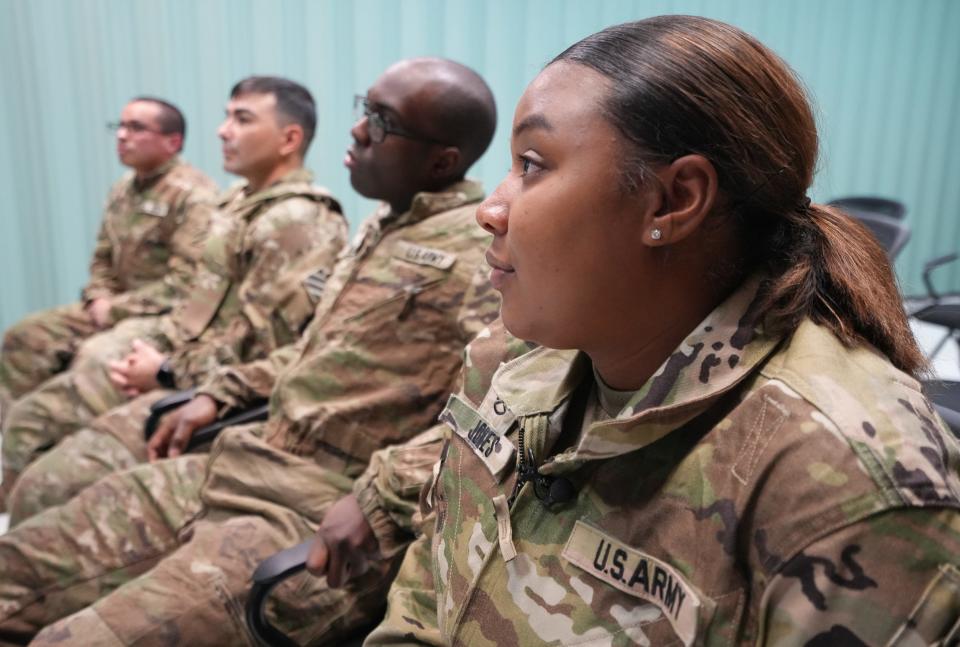
At the military academy, the native of Midland, Michigan, boxed and played rugby and longed to be as close to fighting as the Army allowed in 2010. Her first choice was military police officer as the infantry was still years from accepting women. Instead, the Army placed her in field artillery, in which soldiers use cannons, missiles and rockets to attack the enemy. Some field artillery combat jobs had opened to women earlier than other disciplines had.
"One of my female sociology professors, she grabbed me by my shoulders when she saw how upset I was about being field artillery," Kozuch said. "She just shook me a little and said, 'Lindsey, you're going to pave the way for women in field artillery.'"
With few female officers in field artillery to serve as role models, Kozuch said she leaned on her mother, Maureen, who along with Joe, Kozuch's father, own a flower shop, the Village Green, in Midland.
She'd need good advice.
After graduating from a basic leadership course, Kozuch's battalion commander "made a comment that maybe I would have gotten better grades ... if I had slept with my instructors."
Unsure how to respond, Kozuch responded with nervous laughter, she said. A survival mechanism.
Sexual harassment and assault tears at the fabric of the military
Sexual harassment and assault in the military have torn the fabric of the military for years. Despite vows from Pentagon leaders for "zero tolerance" for assault and harassment, the problem festers. Much of the behavior is criminal. Women in the military are most often the targets. A Pentagon survey released last year showed that an estimated 29% of active-duty women experienced an incident of sexual harassment in 2021, up from the 24% in 2018.
The U.S. Government Accountability Office in a recent report cited sexual harassment and assault in the military as one of the top reasons troops quit.
Don't ignore it, Kozuch's mother advised.
"You need to go back in there and confront him and tell him that this was inappropriate so that he doesn't make these comments to another woman again," Kozuch's mother told her.
Kozuch, accompanied by a female chaplain, did just that. It was difficult to call out a senior leader, she said. He replied that hadn't realized what he said and "played it off," she said.
She hopes the confrontation deterred him.
"That has been a very big turning point in my career," Kozuch said. "That I've gotten this far in the Army, that I don't want to take the B.S. from anybody anymore. If I can confront somebody and stomp it out before it happens again to somebody else, then I am doing a better service to women in the Army in general."
What happened to Kozuch is "unacceptable," said Army Maj. Gen. Deborah Kotulich, director of the Army's Recruiting and Retention Task Force.
"It's tragic, but it just communicates that we're never done," Kotulich said. "We can't say we're there."
Kozuch spoke by phone from Greece, where she was taking part in live-fire training with allies. The war in Ukraine, following Russia's illegal invasion last year, has become an artillery duel with thousands of shells fired from cannons daily. That has put Kozuch's expertise at a premium.
She plans to continue to gain experience and aims to be the first woman to command an artillery battalion. Those units generally have about 500 soldiers who fire shells from 18 howitzer cannons.
All combat units would benefit if more women led them, she said.
"I've realized that these are positive leadership traits that all of the branches need," Kozuch said. "And the more women leaders we have, the more women soldiers will feel comfortable in all types of branches throughout the Army."
Kozuch's experience with sexual harassment is unfortunate but not surprising to Panetta. Bias against women in the military remains, he said.
"It’s not easy," he said. "Some men carry the past with them and can be resistant. In the end, women have made the best case about why restricting them made no sense."
The field artillery life 'chose me'
In a dimly lit room back at Fort Stewart, a simulator projected a forest clearing. First Lt. Delaney Hahn and more than a dozen men, used pencils, maps and tables to target enemy positions.
"I acknowledge it, but it doesn't matter to me," Hahn recalled later of being the only woman in the military exercise. "I'm there in the room, same as they are. So we're all people in a room, getting towards a goal."
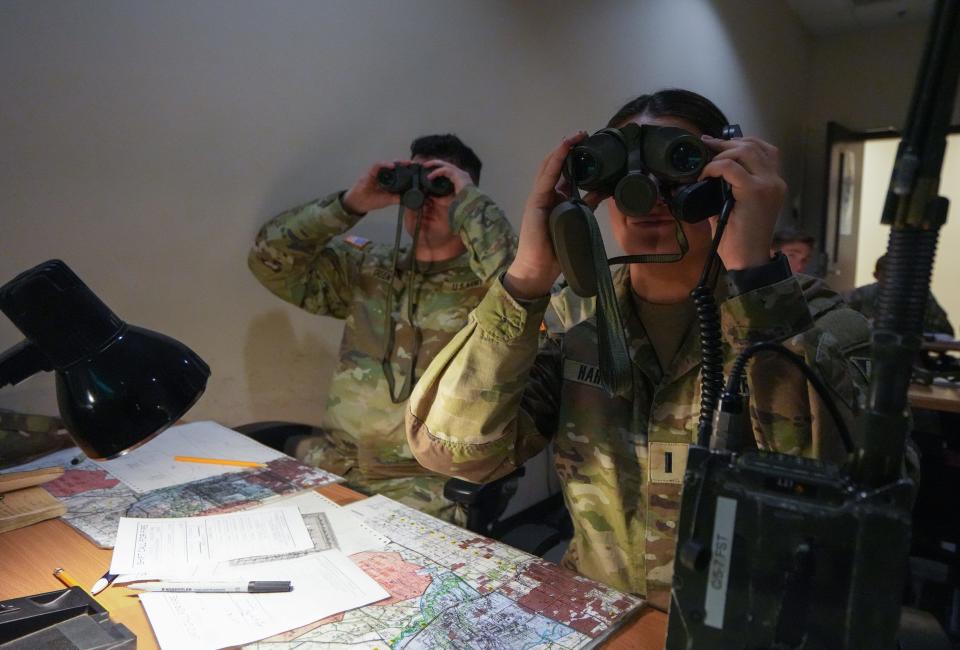
Hahn, 24, remembered being goal-oriented since childhood.
A television ad for the Coast Guard sparked her interest in the military. From that moment, as a middle-school student in Apex, North Carolina, she wanted to serve. A high school athlete, she chose Franklin & Marshall College in Pennsylvania because she could study science, play volleyball and enroll in ROTC.
Hahn majored in biology, with a focus on public health, and bartended to earn money. Her father had been an Army engineer, and she wanted to become a doctor. Medicine would have to wait; the Army needed her skills for combat. Field artillery "chose me," she said with a laugh.
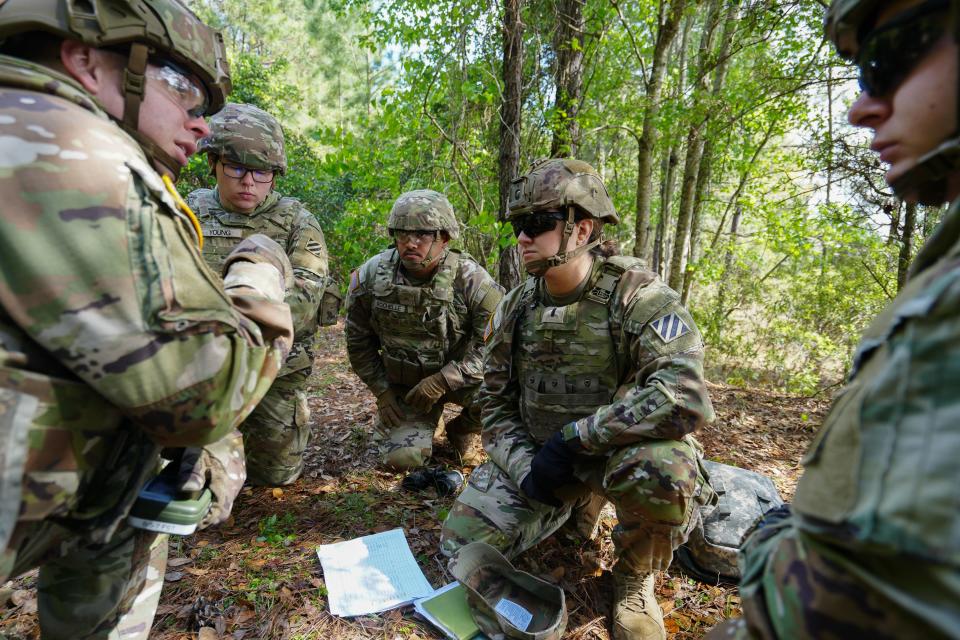
Hahn leads a team of soldiers who collect information on the enemy's positions and relays it to crews who fire artillery shells to destroy them.
Her commander, Capt. Matthew Woislaw, 29, from Northborough, Massachusetts, sees Hahn as a born leader and the kind of soldier the Army needs to help erase its recruiting deficit. He called her as an aggressive problem solver who "produces more in a week than some do in a month."
The Army needs more women like her, he said.
How women can help the Army's recruiting crisis
The military has struggled to find recruits eligible and willing to serve. Last year, the Army recruited 45,000 soldiers, 15,000 short of its 60,000 recruitment goal. Only 1 in 4 people in the United States between age 17 and 24 are able to meet military requirements for intelligence and physical fitness, according to the Pentagon. The military also struggles to recruit when civilian jobs are plentiful.
"The Army's facing a recruiting crisis at the moment, right?" Woislaw said. "So often people self-select out of service because they don't see role models in their field. ... A lot of young girls and women don't see the Army as an option. That's something that's a male-dominated arena."
The Army needs more recruits, period, and it doesn't make sense to exclude people qualified and motivated to serve, said Kotulich, who leads the Army's recruiting task force. It doesn't make sense to exclude women.
"If you have hard problems, if you have a mission and things to be done, why you would ever exclude 50% or more of your talent?" Kotulich said.
The Army's challenge, she said, is to show potential recruits the opportunities that soldiers like Hahn, Kozuch and Jones have had.
According to Woislaw, Hahn has "aggressively overcome" the perception that she's less capable than men by working more than "multiple other lieutenants combined."
"As a woman, she is bringing a different perspective," Woislaw said. "Oftentimes women are able to be more empathetic or see a problem differently, through a different lens. In this day and age, as warfare develops and changes, we would be doing ourselves a disservice. It’s no different than desegregating the Army."
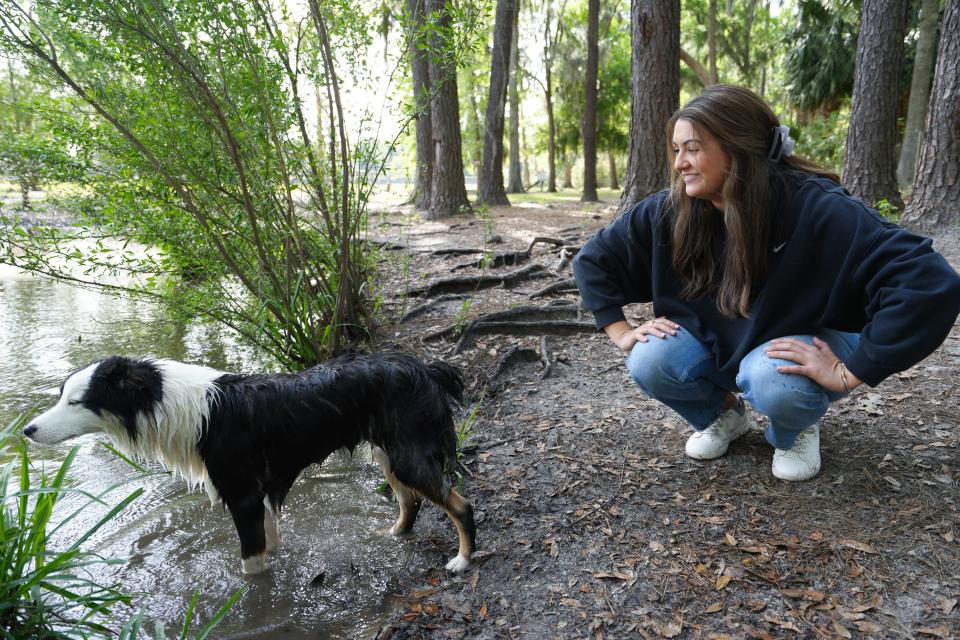
The military has been recruiting women more aggressively with some success but faces challenges, said Beth Asch, an expert on military recruiting at the RAND Corp, a non-profit think tank. Women are less likely than men to want to join the military, and a higher share of women choose to go to college than men she said.
Recruiting women for combat and non-combat jobs makes "total sense," Asch said.
Away from work, Hahn said going to college and being a woman are compatible with a combat job.
"I am feminine," she said at her home, with her dog, Nola, by her side. "I like doing my hair and my makeup and drinking ice coffee and doing my nails on the weekend and going out to see my friends.
"You can be bold, you can be confident, you can be feminine, you can be in combat arms," she said. "You can be all of those things."
This article originally appeared on USA TODAY: Women in combat: Progress since 2013 shows opportunity for US military
Solve the daily Crossword

